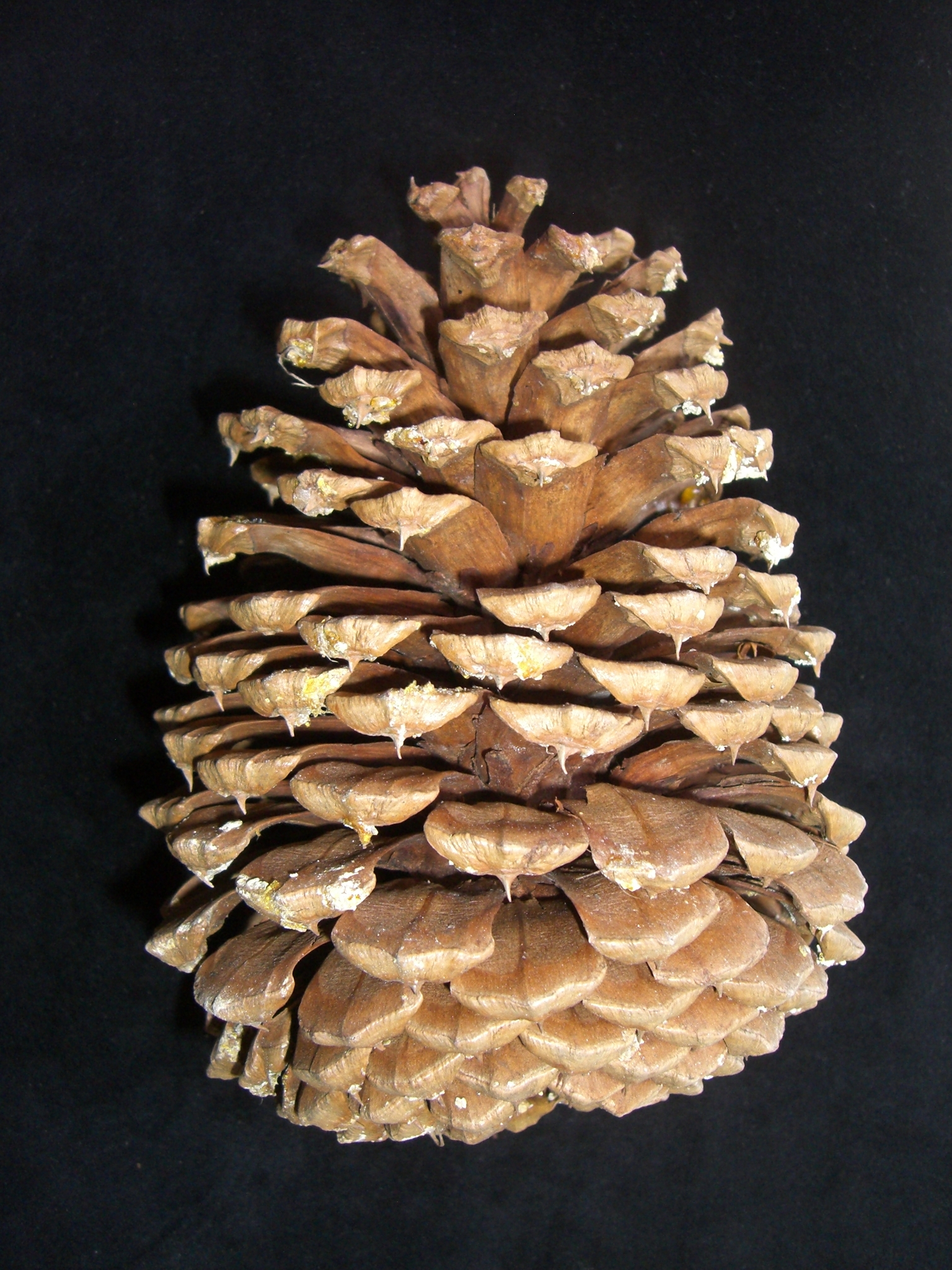
An open, conical-columnar tree 20-30 m tall with short, horizontal erect-tipped branches. Bark brown to blackish and fissured into plates. Buds non-resinous with free scale tips. Young shoots waxy blue-violet. Leaves in 3's, 16-25 cm long, thick, flexible, crimped, grey-green, lemon-scented when crushed. Cones ovoid-oblong, solitary, 12-20 cm long, 8-12 cm wide, scale tips with small recurved prickles. Seed about 1 cm long with wing 2-3 cm long.
Grows naturally in a range of soils in mostly montane coniferous forest areas at altitude 1500-3000 m and often replacing P. ponderosa at high elevations. Rare in cultivation in Australia.
W USA (California).
Similar to P. ponderosa but with darker bark, jigsaw pattern in detail similar to P. ponderosa; crushed stems variously described as smelling of lemon, vanilla, butterscotch or pineapple (but not like turpentine as in P. ponderosa), buds non-resinous with free scales, more waxy foliage, and larger cones with the prickles mostly curving inwards. Trees without cones resemble P. coulteri but the crown is narrower and the leaves usually shorter.
ACT: Mt Stromlo Forest; Westbourne Woods. VIC: Creswick (Forestry School; Melbourne (Royal Bot. Gds,Hopetoun Lawn); Moores Rd below Forestry School by football ground, large old tree 103 years old in 1990 and deteriorating).
Source: (1995). Pinaceae. In: . Horticultural Flora of South-eastern Australia. Volume 1, Ferns, conifers & their allies. The identification of garden and cultivated plants. University of New South Wales Press.
